Dental x-rays are,An essential examination to observe inside hard tissues such as teeth and bonesIt is.
Nevertheless, since radiation is used for x-rays,
It's not good for you because you're exposed to radiation."
It makes it harder to get pregnant."
Many people are concerned about this.
However, the reality is that an x-ray examination does not expose the patient to enough radiation to be a health concern.
This time,I will discuss the radiation dose from dental x-rays.
What is the radiation dose from dental x-rays?

The amount of radiation exposure from dental x-rays,0.01 to 0.1 millisievertIt is.
Dental x-ray types and radiation dose per x-ray.
Dental CT → 0.1 mSv
Dental stomatology X-ray → 0.01 mSv
Dental panoramic radiographs → 0.03 mSv
Lateral head X-ray standardized photograph (cephalogram) → 0.03 mSv
*This varies slightly depending on the type of x-ray to be taken and the x-ray machine.
Radiation exposure from X-rays is expressed in units of "millisieverts (mSv)," with the lower the number, the lower the radiation exposure.
The amount of radiation exposure that can cause health problems to the body is more than 200 millisieverts* per exposure.
Therefore,The amount of radiation exposure from dental x-rays is very low and poses no health risks.
*The values vary depending on the pregnant woman and the part of the body exposed to radiation.
Why dental x-ray exposure is low and safe

There are three reasons why dental x-ray exposure is low and safe
- Dental x-ray exposure is far less than the amount of radiation received in daily life.
- Radiation that causes exposure does not remain in the body.
- Protective aprons are worn so that no more radiation exposure occurs than necessary.
Dental x-ray exposure is far less than the amount of radiation received in daily life.
We are exposed to radiation on a daily basis from water, food, ultraviolet radiation, and other sources.Average 1.5 millisieverts per year for a person living in JapanIt is.
Since the radiation dose for dental x-rays is 0.01 to 0.1 millisievert per x-ray,It is significantly less than the amount of radiation exposure received in a year of daily life, and is considerably safer.It is.
The source of radiation exposure is a type of electromagnetic radiation called "radiation. Exposure to radiation is called "radiation exposure.
There are two types of radiation: artificial radiation, such as dental x-rays, and natural radiation, which exists in nature.
Exposure to more than 200 millisieverts of radiation at any one time, whether natural or manmade, still poses a health risk.
For natural radiation,
- ultraviolet rays of the sun
- Potassium-40, uranium-238, and thorium-232 in soil
- Iodine in water
- Cesium in meat, vegetables, and grains, potassium40 , etc.
There are
None of the above can be avoided in our daily lives, and we are basically exposed to radiation every day.
However,Despite the fact that we are routinely exposed to more radiation than a dental x-ray, we rarely suffer any health problems.
This makes dental x-rays very safe.
Radiation that causes exposure does not remain in the body.
Radiation has the property of passing through the body.
Therefore, even if a dental x-ray is taken,Radiation does not remain in the body and continue to cause harm.
Protective aprons are worn so that no more radiation exposure occurs than necessary.
When taking dental x-rays,A protective apron is worn to minimize exposure to radiation outside of the imaging area.
Protective aprons are made of lead, which is impervious to radiation, and prevent radiation from hitting areas other than the area to be photographed.
Therefore, the amount of radiation exposure from dental x-rays is as close to zero as possible, making them highly safe.
Dental x-ray exposure and its effects on pregnancy and expectant mothers

One of the biggest concerns about exposure to radiation from dental x-rays is the effect on the baby due to exposure of pregnancy and pregnant women.
- Effects of radiation exposure on women's pregnancy
- Effects of male radiation exposure on pregnancy
- Effects of radiation exposure of pregnant women on their babies
The following is an explanation of the three factors, along with the amount of radiation exposure from dental x-rays.
Effects of radiation exposure on women's pregnancy
The dose of radiation that is considered to render a woman permanently infertile is 2,500 to 6,000 millisieverts per exposure.
Exposure to 2,000 millisieverts each year for many years is also said to cause permanent infertility.
Since the maximum radiation dose for dental x-rays is 0.1 millisievert,Basically, there is no need to worry about permanent infertility.
Effects of male radiation exposure on pregnancy
For men, the amount of exposure that results in temporary and permanent infertility varies.
For temporary infertility,
- per dose → 150 millisieverts
- Exposure to radiation over many years → 400 millisieverts per year
For permanent infertility,
- per visit → 3,500-6,000 millisieverts
- Exposure to radiation over many years → 2000 millisieverts per year
exposure to radiation is said to cause male infertility.
Since the maximum radiation dose for dental x-rays is 0.1 millisievert,Basically, there is no need to worry about temporary or permanent infertility.
Effects of radiation exposure of pregnant women on their babies
The effects of radiation exposure on a pregnant woman and her baby vary depending on the time of pregnancy.
Directly to the abdomen,Exposure to radiation above the following values can cause miscarriage, malformations, and developmental problems in babies at certain times of the yearIt is said.
- Baby Miscarriage
- 100 millisieverts or more per fertilization to 9 days
- Baby deformities
- More than 100 millisieverts per pregnancy 3-8 weeks
- Developmental disorders in babies
- More than 300 millisieverts per pregnancy at 8-15 weeks
Since the maximum exposure to radiation from dental x-rays is 0.1 millisievert, there is basically no concern that this will happen.
But just in case,Except in an emergency, dental x-rays are often not taken of pregnant women or women of childbearing potentialIt is.
If you may be pregnant or know you are pregnant, be sure to tell us before the shoot.
Dental x-ray exposure is very low.

The amount of radiation exposure from dental x-rays is far less than what we are exposed to in our daily lives.
In addition, a lead apron, which blocks radiation, is worn during dental x-rays. Wearing a lead apron further reduces the actual radiation exposure.
Dental x-rays are necessary to detect problems in the teeth and gums.
It is undesirable to shoot more than necessary, but at the same time it is not necessary to worry more than necessary.
In 365dentist,
- Dentist-operated open chat to discuss your concerns.
- Helping you find the right dentist
We are doing the following! If you want to make your mouth healthier and more beautiful, come visit us!
RELATED:Pregnancy and Orthodontic Treatment
RELATED:Diagnosis is 90% of orthodontic treatment
365dentist General Supervisor Dentist/Yukiko Katsuya
Graduated from Nagasaki University School of Dentistry, ~2018 Kyushu Medical Center, 2018-present Working at a dental clinic in Tokyo
Supervisor: Dentist/Naomi
After completing clinical training, worked in cosmetic dentistry in Tokyo. Currently a dentist and dental writer.


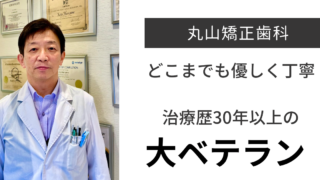
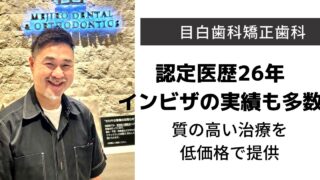
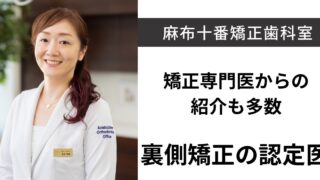

![Toshima-ku, Ikebukuro] Myozui Orthodontics, Kitahara 6 A9D63899 8BBF 4AC0 A512 781143AF8AE2](https://365dentist.jp/wp-content/uploads/2023/03/A9D63899-8BBF-4AC0-A512-781143AF8AE2-320x180.png)
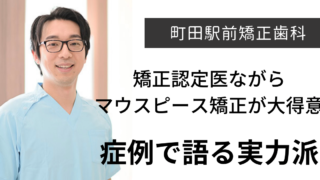
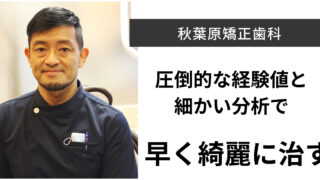

![Ginza, Chuo-ku, Tokyo] Ginza Orthodontics 10 6c0c9a0f 5665 407a 8e43 43063c888234](https://365dentist.jp/wp-content/uploads/2024/02/6C0C9A0F-5665-407A-8E43-43063C888234-320x180.png)




Comment